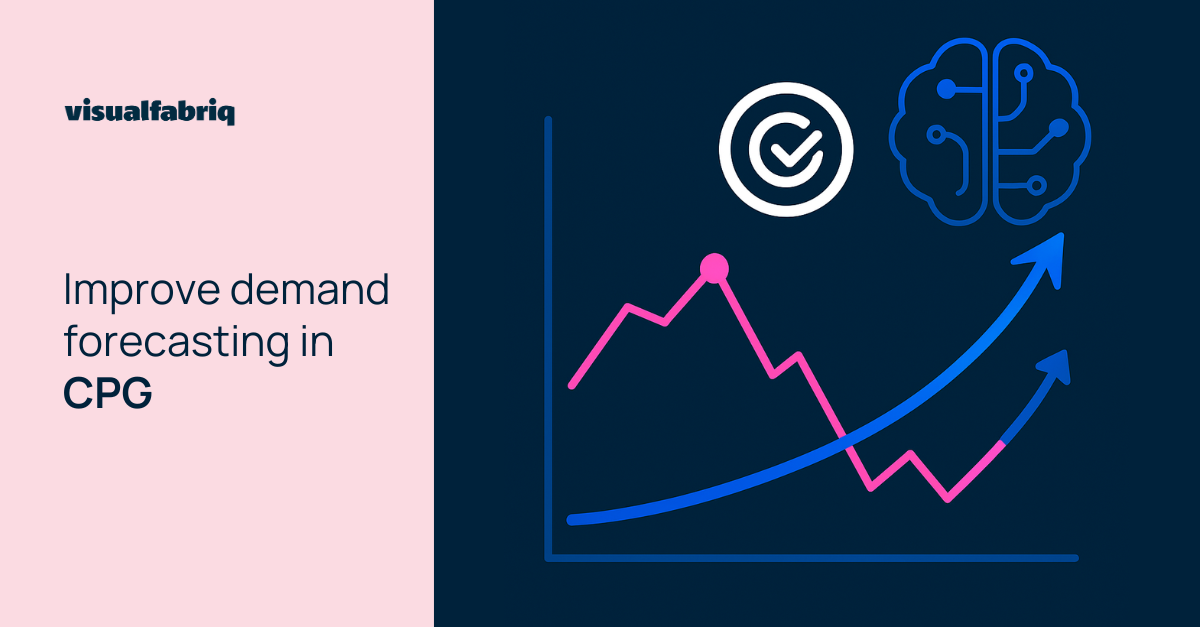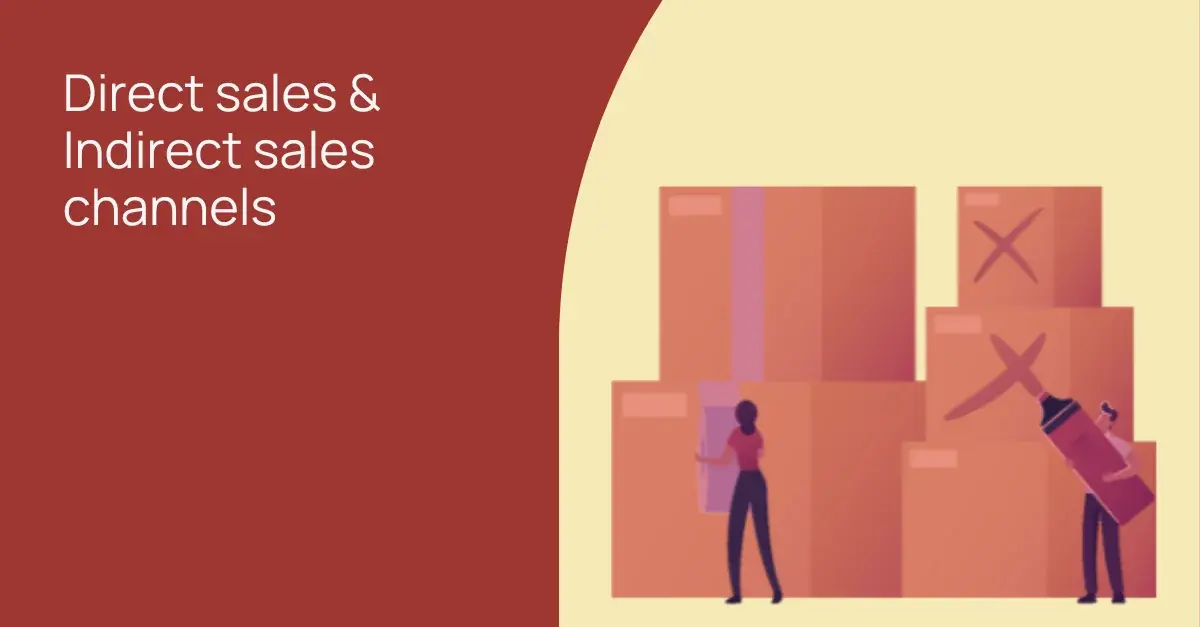.webp)
Unconstrained demand forecasting: A key to success for CPG companies
What is unconstrained demand forecasting?
Unconstrained demand forecasting predicts demand without considering supply-side constraints. In other words, it captures the total sales potential without any limitations from supply or operational capacity.
Why generate unconstrained demand forecasts?
At first glance, these forecasts might seem unrealistic and unachievable due to real-world constraints. However, there is a significant benefit to understanding your potential demand without supply-side limitations, as it reveals your true growth potential.
By providing a clear picture of true market needs, unconstrained demand forecasting enables companies to make more informed decisions about production, inventory, and trade promotions. This approach helps maintain optimal inventory levels, reducing the risk of overstocking or stockouts. Additionally, consistently meeting customer demand leads to higher satisfaction and greater leverage in negotiations with retailers. Accurate forecasts also aid in better financial planning and resource allocation, ultimately boosting profitability.
 Unconstrained metrics: volume and value in demand planning
Unconstrained metrics: volume and value in demand planning
Unconstrained volume refers to the total quantity of products that could be sold if there were no supply constraints. It provides an estimate of the maximum demand for a product in the market, without considering whether orders can be fulfilled. Similarly, unconstrained value represents the total revenue that could be generated from these sales. Together, these metrics offer a comprehensive view of the potential market demand and the financial impact of meeting that demand.
By analyzing unconstrained volume and value metrics over a 12-18-month horizon, companies can gain valuable insights for proactive planning. This mid-term perspective helps in anticipating market trends and aligning strategies and investment decisions accordingly. By understanding the maximum sales potential, companies can:
- Identify market opportunities: Unconstrained metrics help identify areas where demand is high, allowing companies to focus their efforts on the most promising opportunities.
- Optimize inventory levels: By knowing the maximum demand, companies can better plan their inventory levels, balancing the risk of stockouts vs. overstocks.
- Enhance financial planning: Understanding the potential revenue from unconstrained demand helps in better financial planning and budgeting.
- Improve resource allocation: Companies can allocate resources more effectively by focusing on areas with the highest demand potential.
Visualfabriq demand forecasting software translates sales volume into a detailed P&L, offering critical insights into sales volume and value. This ensures that businesses are well-prepared to meet future demands and capitalize on emerging opportunities.
Optimizing volume-to-value forecasting
Visualfabriq connects demand planning and finance, ensuring aligned decision-making across the organization. By creating a central hub for data from various departments, it fosters a cohesive understanding of demand drivers, which in turn supports the supply planning department.
This integration enhances visibility, allowing teams to quickly adjust to changing market conditions. The centralized data hub also ensures that all departments are aligned, making it easier to respond to fluctuations in demand and supply.
The insights provided by Visualfabriq empower teams to respond promptly to market shifts, improving overall operational efficiency. With a unified view of the data, teams can make decisions with confidence and keep the organization agile and responsive to market changes.
Read about other use cases of data analysis in CPG
Aligning unconstrained demand with supply chain capacity
Despite the appeal of unconstrained demand, real-world constraints inevitably come into play. Supply-side constraints not only include production capacity limitations, but also logistical challenges like transportation bottlenecks, and other supply chain disruptions, all of which can hinder the ability to meet high demand and deliver products on time.
Balancing ambitious sales forecasts with realistic supply constraints is crucial for CPG companies. While unconstrained demand forecasting provides a clear picture of market opportunities, it is essential to recognize when forecasted demand exceeds supply capabilities. Failing to do so can lead to out-of-stocks, where demand outstrips supply, or to inefficiencies in other areas of the supply chain.
To effectively balance demand and supply, companies should leverage data-driven insights to refine their demand plans and optimize supply chain operations. Here are some practical tips:

1. Regularly review and adjust forecasts
Continuously monitor and update demand forecasts based on real-world data. This helps in identifying any discrepancies between forecasted demand and actual supply capacity, allowing for timely adjustments.
2. Collaborate closely with supply chain partners
Foster strong communication and collaboration with suppliers and logistics partners. Sharing demand forecasts and supply constraints ensures that all parties are aligned and can work together to address potential issues.
3. Leverage technology for enhanced visibility
Utilize advanced software solutions like Visualfabriq to integrate data from various sources, including historical sales and market analytics. This comprehensive view enables companies to make informed decisions and adjust demand plans accordingly.
4. Simulate and anticipate
Create and test various demand scenarios to understand the potential impact of different supply constraints. This proactive approach helps in developing contingency plans and mitigating risks associated with supply chain disruptions.
5. Optimize inventory management
Use data-driven insights to maintain optimal inventory levels. By understanding the true demand and aligning it with supply capabilities, companies can reduce the risk of both excess supply and out-of-stocks.
How Visualfabriq supports unconstrained demand forecasting

Visualfabriq offers a robust software suite that empowers CPG companies to excel in unconstrained demand forecasting. Here’s how:
- Advanced data integration: Visualfabriq integrates data from various sources, including historical sales, market trends, and customer insights. This comprehensive data collection ensures that forecasts are based on a wide range of relevant information.
- Smart algorithms: The AI-powered software utilizes self-learning algorithms that continuously improve their accuracy over time. These algorithms analyze past and current data to predict future demand with high granularity and precision.
- Delivery- and consumption-based predictions: Visualfabriq allows companies to create and test various demand scenarios. This feature is particularly valuable during peak seasons, such as the holidays, where accurate forecasting is critical. Our models can use both sell-in (shipments) and sell-out (consumption) data.
- Collaboration and transparency: The software facilitates transparent communication between different departments and with retail partners. By sharing detailed insights and forecasts, companies can align their strategies and ensure everyone is on the same page. This enhanced collaboration and transparency significantly improve the accuracy and reliability of the demand forecasting process.
- User-friendly interface: Visualfabriq’s intuitive interface makes it easy for demand planning teams to generate and analyze forecasts without requiring extensive technical expertise or analytical skills.
Conclusion
If done the right way, unconstrained demand forecasting has significant added value for CPG companies, as it provides a clear view of market needs and enables better decision-making. Visualfabriq’s advanced software solution supports this approach by offering comprehensive data integration, smart algorithms, scenario planning, and transparent collaboration. By leveraging Visualfabriq, CPG companies can master the art of data-driven demand forecasting and achieve greater success in a competitive market.
Interested in learning more? Download our Demand Forecast brochure and request a demo to see the software in action and get answers to any questions you may have.



